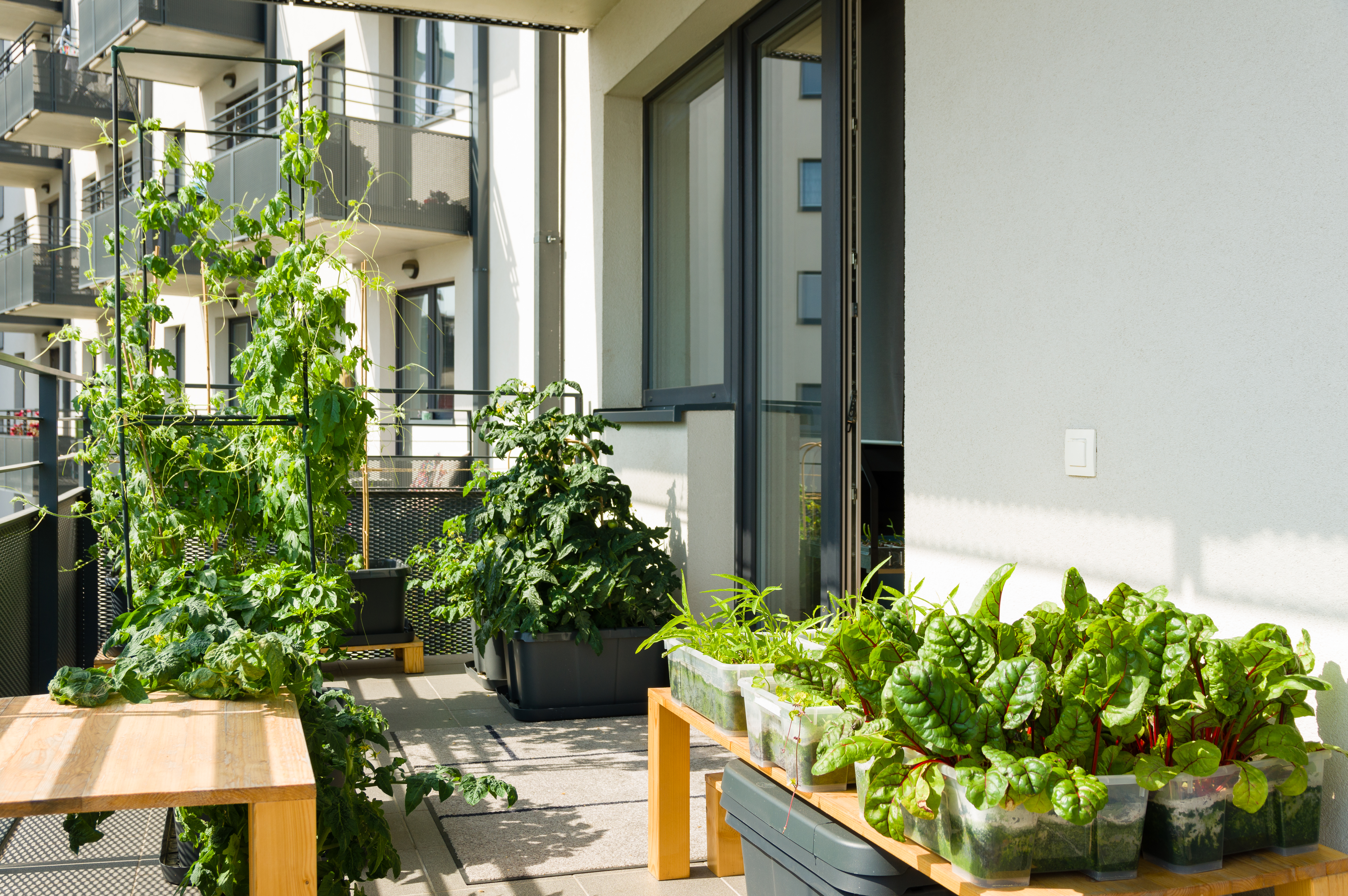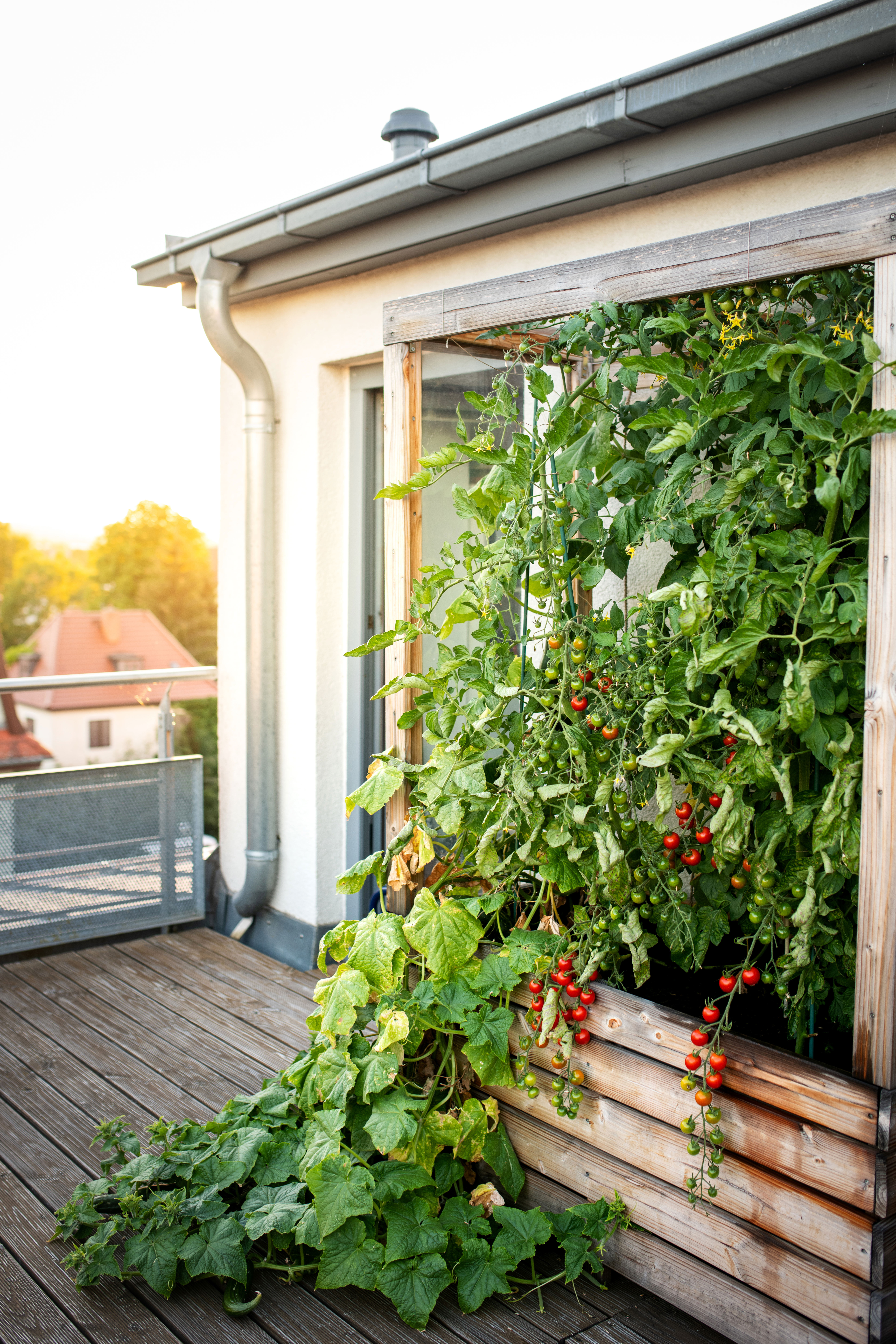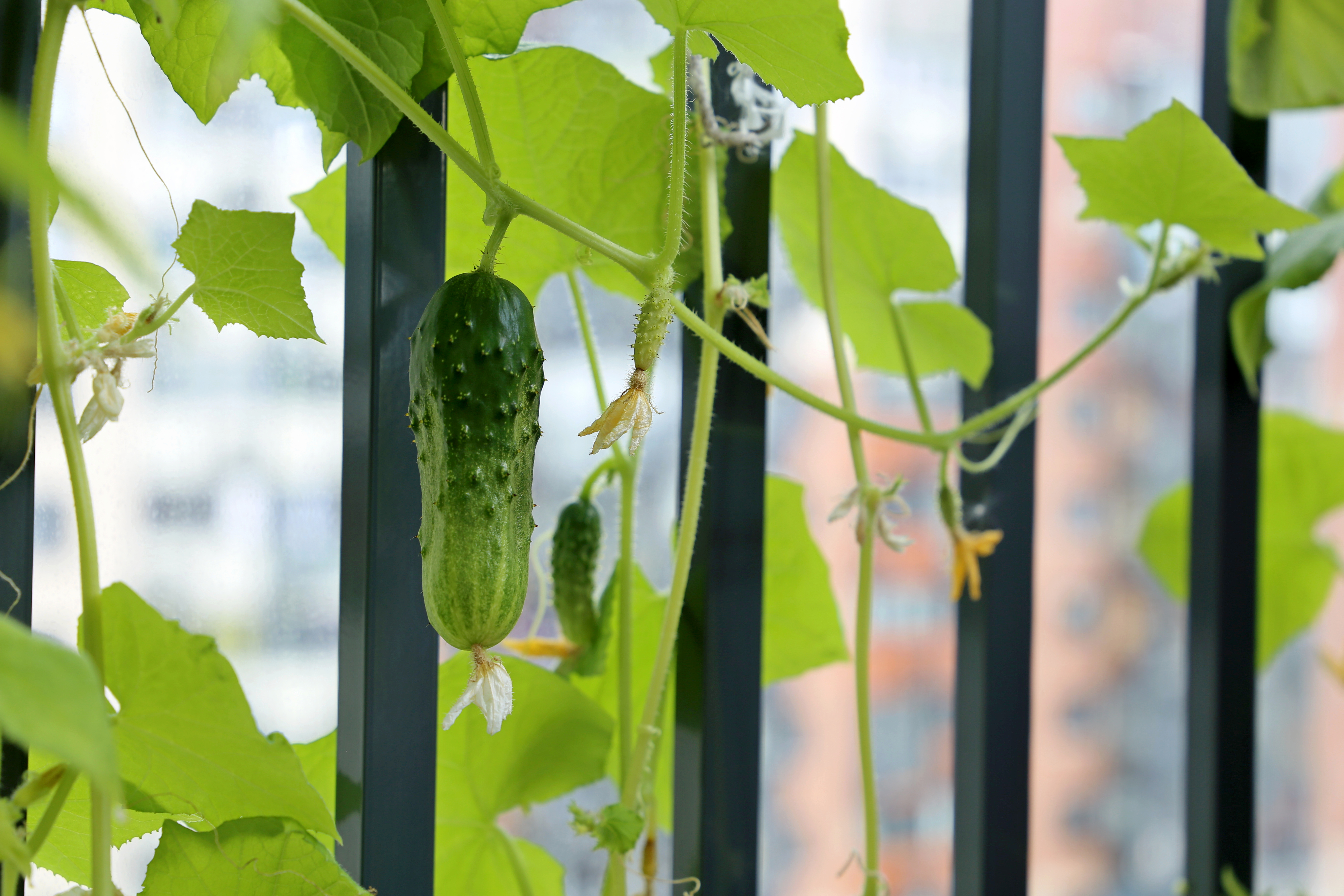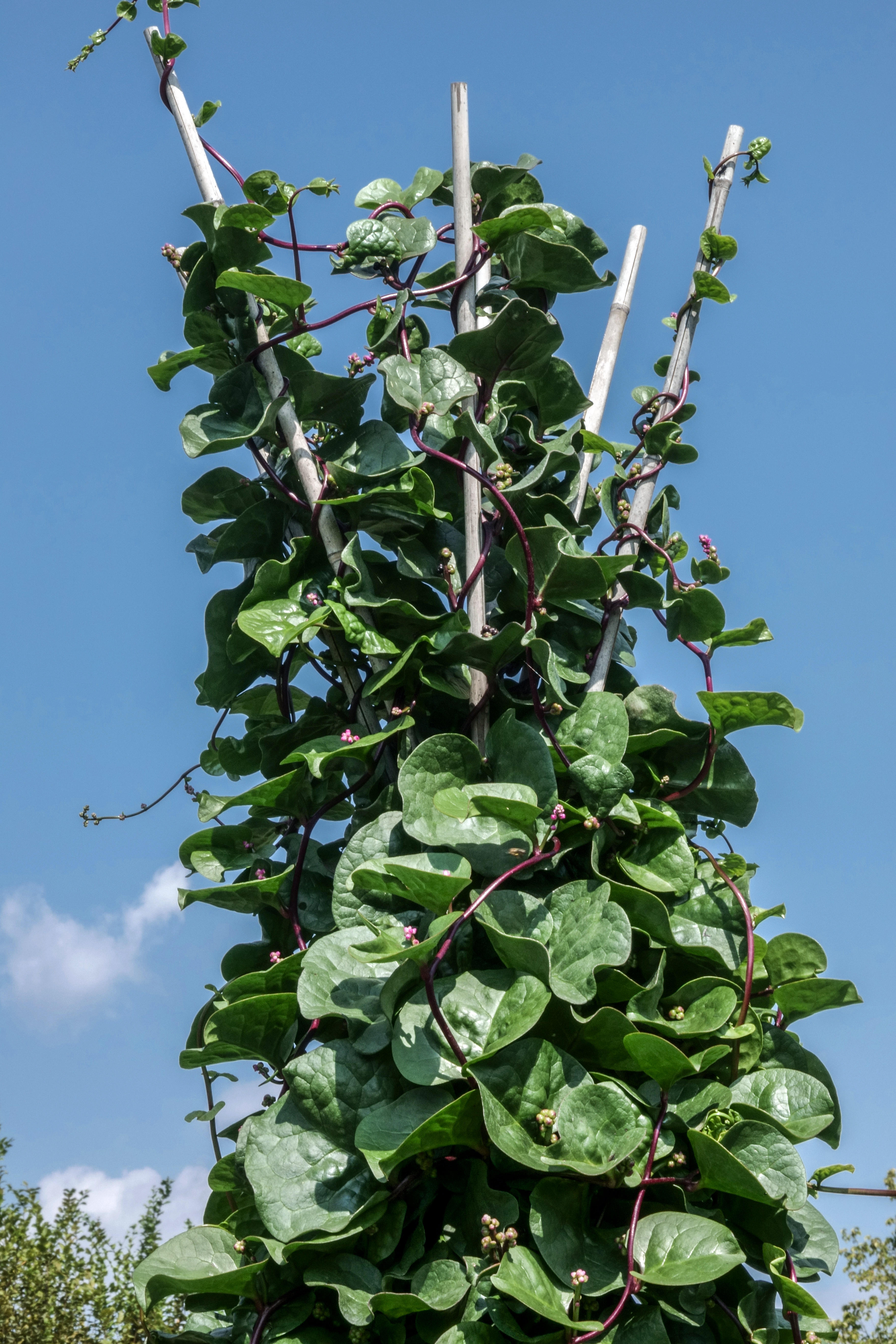
With spring now in full swing you might be tempted to get your gardening game on again, and for a bountiful harvest of homegrown produce, why not start with some veggies? You don't need a sprawling allotment to start your own edible garden either; with the right vegetables you can embrace your green thumb no matter how limited your outdoor space.
That's because fruit and vegetable varieties that like to climb or vine up a trellis will only take up vertical space, meaning they won't take over your backyard and require acres of land. 'Vertical gardening is perfect for maximizing the productivity of small patios and balconies,' explains Tony O'Neill, expert gardener and owner of Simplify Gardening. 'It's not just a space-saver either; it also makes for an attractive feature on a patio or balcony, can reduce pest and disease issues, and makes harvesting easier,' he adds.
To help you harness your green thumb, here are seven edible vertical-growers to plant in your modern vegetable garden, recommended by the experts.
1. Tomatoes

'A classic choice for a vertical garden, tomatoes thrive when grown up stakes, cages, or trellises,' explains Tony O'Neill of Simplify Gardening. 'They need plenty of sunlight, regular watering, and occasional fertilizing.'
The great advantage of this staple salad ingredient is that growing tomatoes in containers is super easy, so you don't have to worry about digging big beds. 'Most varieties, especially indeterminate vining types like cherry tomatoes, will happily climb up a trellis or cage as they grow,' says Lina Cowley, gardener at Trimmer Roots. 'The vines can get quite tall, so providing vertical support not only saves space but also keeps the plant upright and prevents the fruit from touching the ground (which can lead to rot).'
2. Peas
Like tomatoes peas are also vining plants, making them perfect for a patio or balcony. 'They're natural climbers that do very well when given a trellis or netting to scramble up,' says Lina. 'Vertical growing keeps the plants upright, improving air circulation and sun exposure while making harvesting a breeze. Peas are also relatively compact plants, so they're perfect for small-space gardening.'
Tony notes that this dinner-time favorite is ideal for cooler regions. 'They prefer colder temperatures and moist soil,' he says. 'Support them early on to encourage vertical growth.' Lina adds that you should amend the soil with compost or aged manure before planting but avoid excess nitrogen fertilizer as they're light feeders.
3. Pole Beans

As the name suggests, pole beans are made for vertical gardening, so these upward growers won't take over your backyard. 'As vining plants, they naturally want to climb, making them perfect candidates for a trellis or pole support system,' Lina explains. 'Pole beans are also prolific producers, so training them to grow upwards allows you to harvest a sizable crop from just a few plants in a compact space.'
According to Tony, these plants like warm weather, well-drained soil, and consistent moisture. 'Beans also fix nitrogen in the soil, making them beneficial for whatever you plant after them,' he says. That said, Lina suggests feeding plants lightly with a low-nitrogen fertilizer once flowering begins for the best yield.
4. Peppers
'While not natural climbers, peppers can be successfully grown vertically with a little support, saving valuable space,' Tony says. 'They require warm soil, full sun, and steady moisture, and you should use small stakes or cages to keep them upright.'
To grow them, Lina suggests using pots or containers hung from a railing or wall-mounted planter. 'This keeps the plants up off the ground, allowing better airflow to prevent issues like blossom end rot,' she says. 'It also puts the peppers at a more convenient height for tending and harvesting. They need at least six hours of direct sun per day and fertile, well-draining soil.' The beautiful jewel-colored peppers will add visual interest to your container garden once ripe.
5. Cucumbers

While not a traditional vertical grower, cucumbers are another vining vegetable that thrives when grown upwards. 'Allowing them to climb a trellis or cage keeps the fruits off the ground,' Lina notes. 'It also makes harvesting much easier since the cucumbers dangle within easy reach. The vines can get quite long, so vertical supports let you take advantage of their climbing habit without taking over your whole patio.'
She suggests planting cucumbers in full sun after your soil warms to at least 60°F and then keeping the soil consistently moist but ensuring it drains well. 'Cucumbers need warm temperatures, lots of sunlight, and regular watering,' adds Tony. 'Use a sturdy trellis to support their weight as they grow.'
6. Squash and Melons
You might not think of a small garden as a suitable space to grow the likes of squash and melon, certain varieties will thrive even in limited spaces. 'Some varieties of squash and melons can be trained to grow up vertical supports,' Tony explains. 'Look for compact or "bush" varieties that are more suited to confined spaces.'
He goes on to explain that they need a lot of sunlight and well-drained soil. 'You may also want to use slings to support the weight of developing fruits,' he adds. We love this planter and trellis combo from Target for the job as it makes it easy to tie slings or alternative supports to your growing system. It also comes in three different colors to suit your space.
7. Climbing spinach

Finally, salad leaves make a great vertical allotment idea as they can easily be grown on a wall, where the planter is fixed to the wall itself. For a vining leaf variety, you could also use climbing spinach. 'Also known as Malabar spinach, this plant is a great leafy green for vertical gardens, thriving in hot weather when traditional spinach might wilt,' explains Tony. 'It requires a trellis to climb and enjoys partial shade to full sun, along with regular watering.'
For a thriving edible garden no matter how small your outdoor space, consider planting some of these vertical growers this spring for a compact little allotment.







